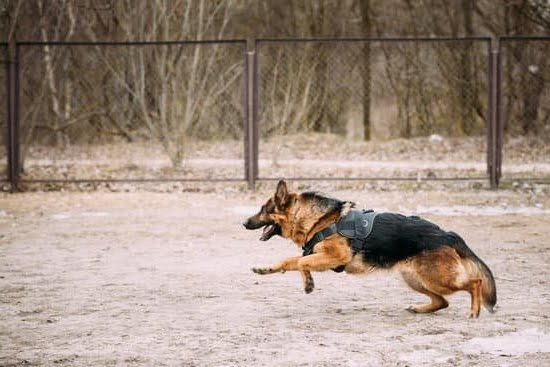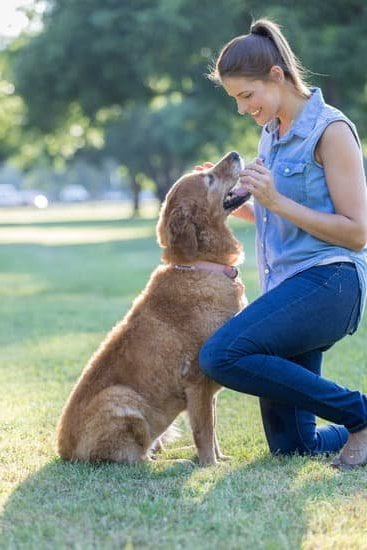Training your furry companion to walk without pulling is an essential skill for both the dog and the owner. It not only makes walks more enjoyable but also strengthens the bond between you and your pet. In this article, we will explore the reasons why leash training is crucial for a well-behaved canine companion and provide you with valuable insights on how to achieve this goal effectively.
Understanding why dogs pull while walking on a leash is key to addressing this common behavior issue. Dogs often pull because they are naturally curious, seeking stimulation from their surroundings, or simply due to lack of proper training. By recognizing these motivations behind pulling, owners can take proactive steps to redirect their dog’s behavior through positive reinforcement techniques.
To successfully train your dog to walk without pulling, it is important to have the right tools on hand. Basic equipment such as a sturdy leash and harness can greatly assist in teaching proper walking etiquette. With a step-by-step guide and consistent practice, you can instill good leash manners in your furry friend and set the foundation for stress-free walks in the future.
Understanding Why Dogs Pull While Walking on a Leash
Dogs are naturally curious and energetic creatures, which can often lead to pulling while walking on a leash. Understanding why dogs engage in this behavior is crucial in order to effectively train them to walk without pulling.
One common reason for pulling is that dogs are simply excited to explore their surroundings and may want to move at a faster pace than their owners. Additionally, some dogs may pull because they have not been properly trained or taught how to walk politely on a leash.
To address this behavior, it’s important for dog owners to use positive reinforcement techniques and proper training methods. By understanding the reasons behind a dog’s pulling behavior, owners can tailor their training approach accordingly. Positive reinforcement involves rewarding desirable behaviors, such as walking calmly on a leash without pulling, with treats, praise, or playtime. This method helps dogs associate good behavior with positive outcomes and encourages them to repeat it.
When starting the training process, dog owners should equip themselves with the basic tools needed for successful leash training. These include a sturdy and comfortable leash that allows for better control of the dog, as well as a well-fitted harness or collar.
It’s also helpful to have treats or toys on hand to reward your dog during training sessions. By using the right equipment and positive reinforcement techniques consistently, owners can effectively teach their dogs how to walk without pulling.
- Understand the reasons behind your dog’s pulling behavior
- Use positive reinforcement techniques such as treats or praise
- Equip yourself with necessary tools like a sturdy leash and harness
Basic Equipment Needed for Leash Training
When it comes to leash training your dog to walk without pulling, having the right equipment is essential for success. Here are some basic items you will need:
- Leash: Choose a sturdy leash that is the appropriate length for your dog’s size and strength. A standard 6-foot leash is usually recommended for most dogs.
- Collar or Harness: Select a collar or harness that fits comfortably on your dog without causing any discomfort. Some trainers prefer using front-clip harnesses to discourage pulling.
- Treats: Have high-value treats on hand to use as rewards for good behavior during training sessions.
Once you have the necessary equipment, you can begin teaching your dog how to walk politely on a leash without pulling. Remember, consistency and patience are key when it comes to training.
- Start with Short Sessions: Begin by practicing in a quiet, distraction-free area where your dog can focus on learning without being overwhelmed.
- Use Positive Reinforcement: Reward your dog with treats and praise when they walk calmly beside you without pulling on the leash.
- Practice Loose Leash Walking: Encourage your dog to stay close to you by rewarding them whenever there is slack in the leash and they are not pulling.
With practice and positive reinforcement, your furry companion will soon learn how to walk nicely on a leash without constantly tugging and pulling. Remember to be patient and consistent in your training efforts for the best results.
By investing time and effort into teaching your dog proper leash manners, you can enjoy stress-free walks together while strengthening the bond between you and your pet.
Step-by-Step Guide on How to Teach Your Dog to Walk Without Pulling
Dogs pulling on their leashes during walks can be frustrating for both you and your furry companion. However, with patience, consistency, and the right training techniques, you can teach your dog to walk politely by your side without pulling. Here is a step-by-step guide on how to train your dog to walk without pulling:
1. Start with the Basics: Before heading out for a walk, make sure your dog is comfortable wearing a well-fitted harness or collar. The equipment should not be too loose or too tight to ensure your dog’s safety and comfort during the training process.
2. Use Positive Reinforcement: When your dog walks calmly beside you without pulling on the leash, reward them with treats, praise, or even a favorite toy. Positive reinforcement helps reinforce good behavior and encourages your dog to continue walking politely.
3. Practice Loose Leash Walking: Begin walking with your dog on a loose leash in a distraction-free environment such as your backyard or a quiet street. If your dog starts to pull, stop walking immediately and wait for them to come back to your side before continuing.
| Training Tips | Details |
|---|---|
| Start Slowly | Build up duration gradually to prevent frustration in both you and your dog |
| Be Patient | Training takes time and consistency, so have realistic expectations |
| Reward Calm Behavior | Praise and reward your dog when they walk calmly without pulling |
By following these steps and being consistent in your training efforts, you can help your dog learn how to walk without pulling on the leash effectively. Remember that every dog is different, so be patient and adjust the training methods as needed to suit your pet’s unique personality and learning style.
Using Positive Reinforcement Techniques to Encourage Good Behavior
When it comes to teaching your dog how to walk without pulling on the leash, positive reinforcement is a powerful tool. Positive reinforcement involves rewarding your dog for good behavior, which in turn encourages them to repeat that behavior. In the context of leash training, this means providing treats, praise, or any other form of reward when your dog walks calmly by your side without pulling.
One effective way to use positive reinforcement is by utilizing high-value treats that your dog loves. These treats should be reserved exclusively for walks and not given at any other time. By associating delicious rewards with walking nicely on a leash, your dog will be more motivated to follow your lead. Remember to keep the training sessions short and consistent to prevent overfeeding and maintain their focus.
In addition to treats, verbal praise and physical affection can also be powerful forms of positive reinforcement. A simple “good boy” or a pat on the head can go a long way in letting your dog know that they are doing well.
Be sure to deliver these rewards immediately after they exhibit the desired behavior, such as walking beside you without pulling. Consistency is key in reinforcing good behavior and helping your furry companion understand what is expected of them during walks.
| Positive Reinforcement Techniques | Benefits |
|---|---|
| Using high-value treats | Motivates dogs to walk calmly on a leash |
| Verbal praise and physical affection | Reinforces good behavior and strengthens bond with the dog |
Common Mistakes to Avoid While Leash Training Your Dog
Consistency Is Key
One common mistake that many dog owners make while leash training their furry companions is inconsistency. Dogs thrive on routine and consistency, so it’s important to maintain a steady approach to training. This means using the same commands, walking routes, and training methods each time you go out for a walk. Inconsistency can confuse your dog and make it difficult for them to understand what is expected of them while on the leash.
Avoiding Punishment
Another mistake to avoid when leash training your dog is using punishment as a form of correction. Pulling on the leash or using harsh corrections can lead to fear and anxiety in your dog, making them less likely to respond positively to your training efforts. Instead, focus on positive reinforcement techniques such as treats, praise, and rewards for good behavior. This will create a positive association with walking without pulling and strengthen the bond between you and your pup.
Not Addressing Underlying Issues
It’s important to remember that pulling on the leash is often a symptom of an underlying issue such as excitement, fear, or lack of proper socialization. Ignoring these root causes can make leash training more challenging in the long run.
Take the time to address any behavioral issues with patience and understanding before focusing solely on leash training. By addressing these underlying issues, you can help your dog become more confident and well-behaved during walks, ultimately leading to a more enjoyable experience for both of you.
Tips for Dealing With Distractions During Walks
When it comes to training your dog to walk without pulling, dealing with distractions during walks is a common challenge that many dog owners face. Whether it’s another dog, a squirrel, or even just an interesting smell, distractions can easily throw off your dog’s focus and lead to pulling on the leash. However, with some tips and strategies in place, you can effectively manage distractions and teach your dog to stay calm and focused during walks.
Stay Calm and Redirect Focus
One important tip for dealing with distractions during walks is to stay calm yourself. Dogs are highly attuned to their owner’s emotions, so if you become frustrated or anxious when faced with a distraction, your dog is likely to pick up on those cues.
Instead, try to remain calm and composed, using a positive tone of voice to redirect your dog’s attention back to you. You can use treats or toys as tools for redirection, encouraging your dog to focus on you rather than the distraction.
Practice Desensitization Techniques
Another effective strategy for dealing with distractions during walks is to practice desensitization techniques with your dog. This involves gradually exposing your dog to the things that usually trigger distractions in a controlled setting. For example, if your dog gets excited around other dogs, start by practicing obedience commands at a distance from other dogs and gradually decrease the distance over time as your dog becomes more comfortable and focused.
Use Positive Reinforcement
Positive reinforcement is key when dealing with distractions during walks. Whenever your dog successfully ignores a distraction and stays focused on you, be sure to praise and reward them with treats or verbal praise. This will help reinforce the desired behavior of staying calm and attentive during walks. Consistency is key when using positive reinforcement, so be sure to reward good behavior consistently every time you go for a walk.
Troubleshooting Common Challenges in Leash Training
When training your dog to walk without pulling, you may encounter common challenges that can hinder progress. One of the most common issues is inconsistency in applying training techniques. It is important to be consistent with your commands, rewards, and expectations so that your dog learns what is expected of them during walks. Inconsistency can confuse your furry friend and make it harder for them to understand the desired behavior.
Another challenge many dog owners face while leash training is dealing with stubborn behavior. Some dogs may resist walking nicely on a leash and continue to pull despite your efforts. In such cases, patience is key. It’s important not to lose your cool or get frustrated with your dog. Instead, remain calm and persistent in reinforcing positive behavior. Consistency and patience are crucial when tackling stubborn behavior during leash training.
Distractions can also pose a challenge when teaching your dog to walk without pulling. Dogs are naturally curious creatures, and they may get easily distracted by sights, sounds, or smells during walks. To address this challenge, practice walking in quiet environments initially before gradually introducing distractions.
Use treats or toys to redirect your dog’s attention back to you whenever they get distracted. By gradually exposing them to distractions in a controlled manner, you can help them focus better on walking without pulling over time.
By understanding these common challenges and implementing effective strategies to overcome them, you can make progress in leash training your dog to walk without pulling. Remember that every dog is different, so it may take time and patience to see improvements in their walking behavior. Stay consistent, use positive reinforcement techniques, and address any challenges as they arise to ensure a successful leash training experience for both you and your furry companion”.
Incorporating Regular Practice and Consistency for Long-Term Success
Consistency is key when it comes to training your dog to walk without pulling. Dogs thrive on routine and repetition, so it is important to establish a consistent training schedule. Aim to practice leash training with your dog at least once a day, ideally during a time when both you and your dog are relaxed and focused. This will help reinforce the desired behavior and make it more likely for your dog to remember what is expected of them.
During each training session, focus on reinforcing good walking behavior with positive reinforcement techniques such as treats, praise, or toys. Consistently reward your dog when they walk nicely by your side without pulling. This will create a positive association with walking calmly on the leash and encourage them to continue displaying this behavior in the future.
Additionally, vary your walking routes and environments to provide different experiences for your dog. This will help them generalize their leash-walking skills and adapt to various distractions they may encounter while out on walks. By consistently practicing in different settings, you can help cement their training and ensure that they can walk politely on the leash no matter where you go.
Remember that training takes time and patience, so be prepared to invest the effort into regular practice sessions. With dedication and consistency, you can achieve long-term success in teaching your dog how to walk without pulling. Celebrate small victories along the way, stay positive, and enjoy stress-free walks with your well-trained pup.
Conclusion
Training your dog to walk without pulling is an essential skill for any pet owner. Not only does it make walks more enjoyable, but it also ensures the safety of both you and your furry companion. By understanding why dogs pull on the leash, equipping yourself with the right tools, and following a step-by-step training guide, you can teach your dog to walk calmly by your side.
Using positive reinforcement techniques is key to encouraging good behavior in your dog. Rewarding them for walking without pulling reinforces the desired behavior and strengthens the bond between you and your pet. Consistency is also crucial in leash training – practice regularly and be patient as your dog learns this new skill.
While leash training may come with its challenges, such as dealing with distractions or overcoming common mistakes, staying committed to the process will ultimately lead to success. Remember to celebrate each milestone achieved during the training process and enjoy stress-free walks with your well-trained dog. With dedication, patience, and the right approach, you can train your dog to walk without pulling and create lasting memories together on your daily walks.
Frequently Asked Questions
How Do I Train My Dog Not to Pull When I Walk?
Training a dog not to pull when walking requires patience and consistency. One effective method is using positive reinforcement, such as treats or praise, to reward your dog for walking nicely by your side. Additionally, utilizing tools like a front-clip harness can help redirect your dog’s attention back to you when they start pulling.
How Do You Walk Your Dog if He Keeps Pulling?
If your dog continues to pull while walking, it’s essential to remain calm and avoid yanking on the leash, as this can reinforce the behavior. Instead, try changing direction frequently or stopping in place until your dog relaxes and focuses on you. Consistency in enforcing these techniques will help your dog understand the desired behavior.
How Long Does It Take to Train a Dog Not to Pull?
The time it takes to train a dog not to pull when walking varies depending on the individual dog and their previous experiences. Some dogs may catch on quickly within a matter of days with consistent training, while others may take weeks or even months to break the habit fully.
It’s essential to be patient and persistent in your training efforts for long-term success.

Welcome to the blog! I am a professional dog trainer and have been working with dogs for many years. In this blog, I will be discussing various topics related to dog training, including tips, tricks, and advice. I hope you find this information helpful and informative. Thanks for reading!





